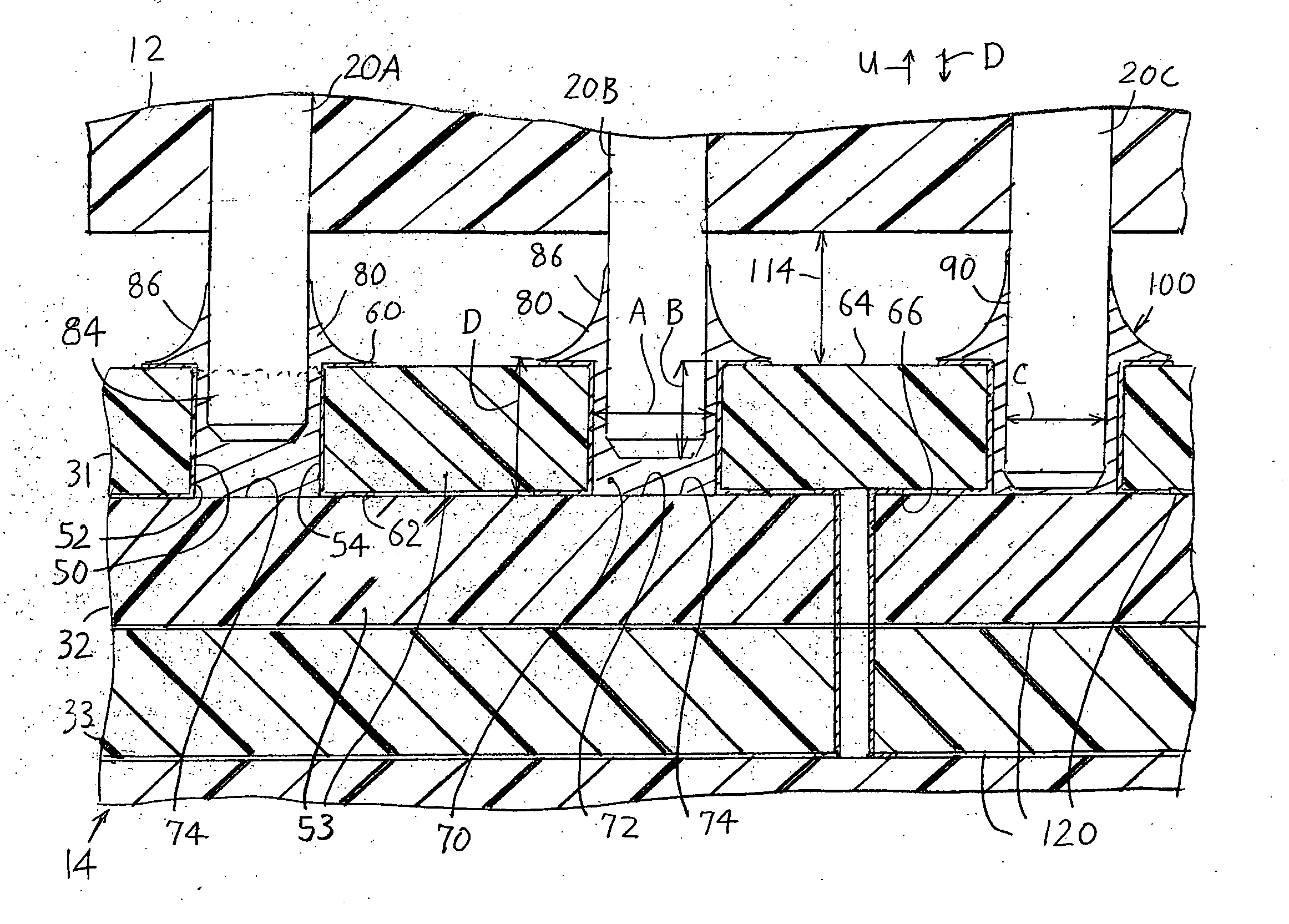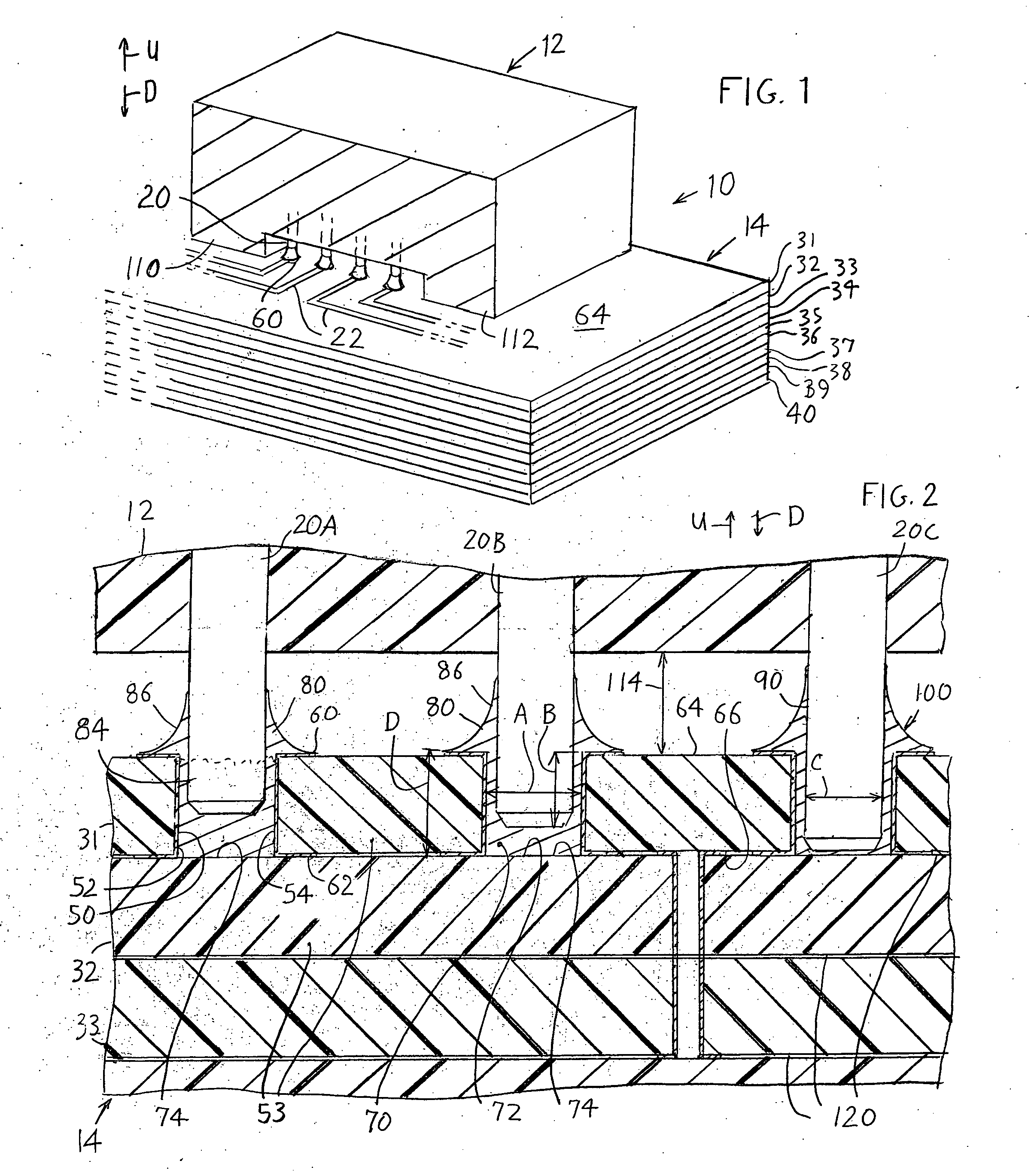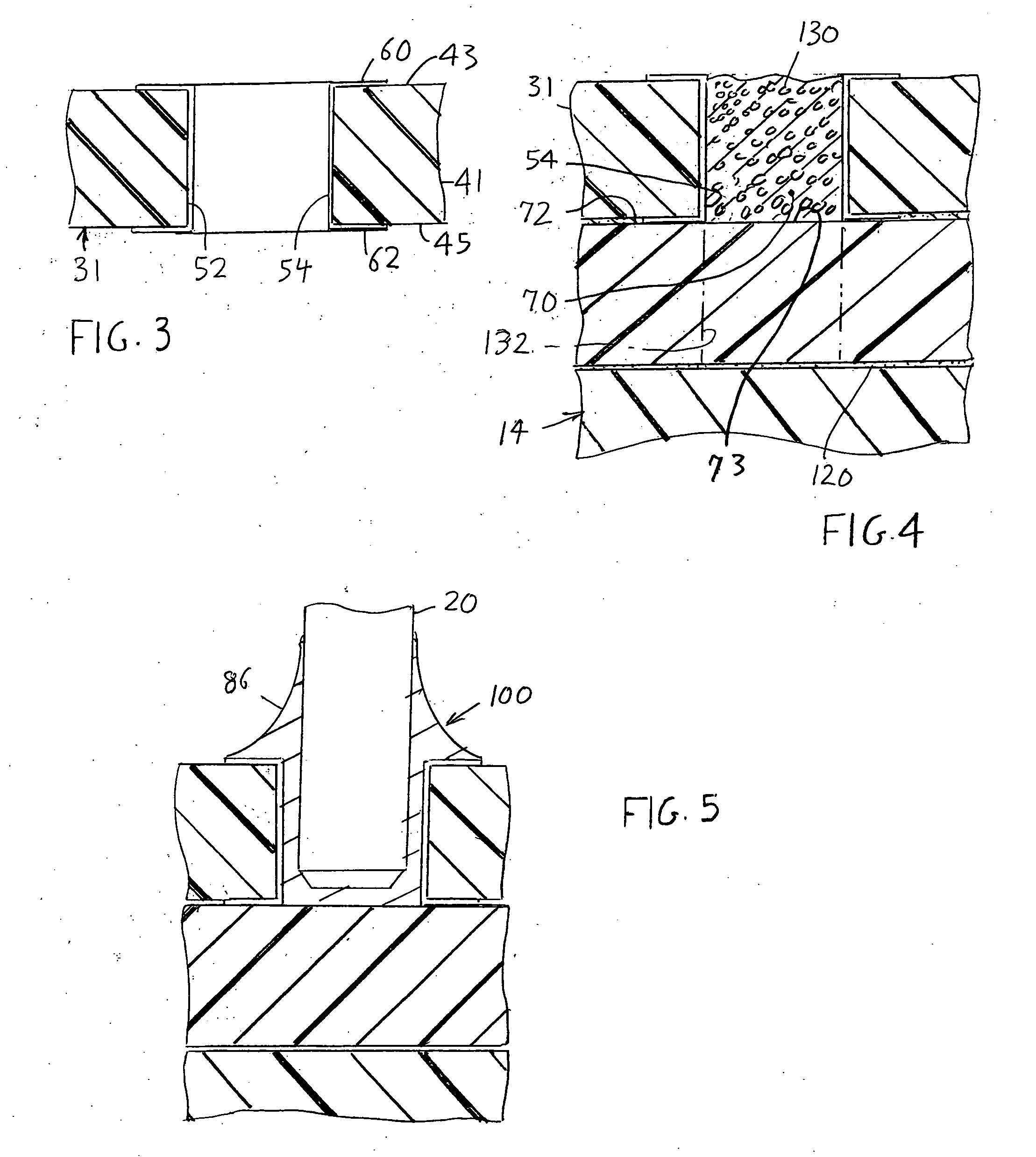Enhanced blind hole termination of pin to PCB
- Summary
- Abstract
- Description
- Claims
- Application Information
AI Technical Summary
Benefits of technology
Problems solved by technology
Method used
Image
Examples
Embodiment Construction
[0013]FIG. 1 illustrates a termination system 10 of the present invention, wherein a component 12 that lies on a multi-layer circuit board assembly 14 has component pins, or leads, or tails 20 that must be soldered to traces 22 on a first layer 31 of the circuit board assembly. The particular circuit board assembly 14 includes ten layers 31-40 that lie in a facewise stack wherein each layer lies facewise adjacent to one or two other layers, to form a facewise stack of layers. Up and down directions are indicated by arrows U and D for the particular orientation of the component and board assembly illustrated in the figures, although it should be understood that the board assembly and component can lie in any orientation. As shown in FIG. 3, each layer such as 31 includes a plate 41 of insulative material. Most or all of the layers also include traces such as 60, 62 on one or both faces 43, 45 of the plate, the traces being formed of a film of conductive material.
[0014]FIG. 2 shows t...
PUM
 Login to View More
Login to View More Abstract
Description
Claims
Application Information
 Login to View More
Login to View More - R&D
- Intellectual Property
- Life Sciences
- Materials
- Tech Scout
- Unparalleled Data Quality
- Higher Quality Content
- 60% Fewer Hallucinations
Browse by: Latest US Patents, China's latest patents, Technical Efficacy Thesaurus, Application Domain, Technology Topic, Popular Technical Reports.
© 2025 PatSnap. All rights reserved.Legal|Privacy policy|Modern Slavery Act Transparency Statement|Sitemap|About US| Contact US: help@patsnap.com



